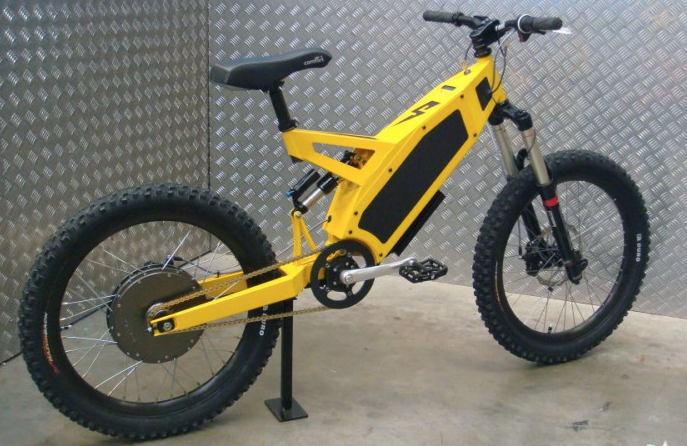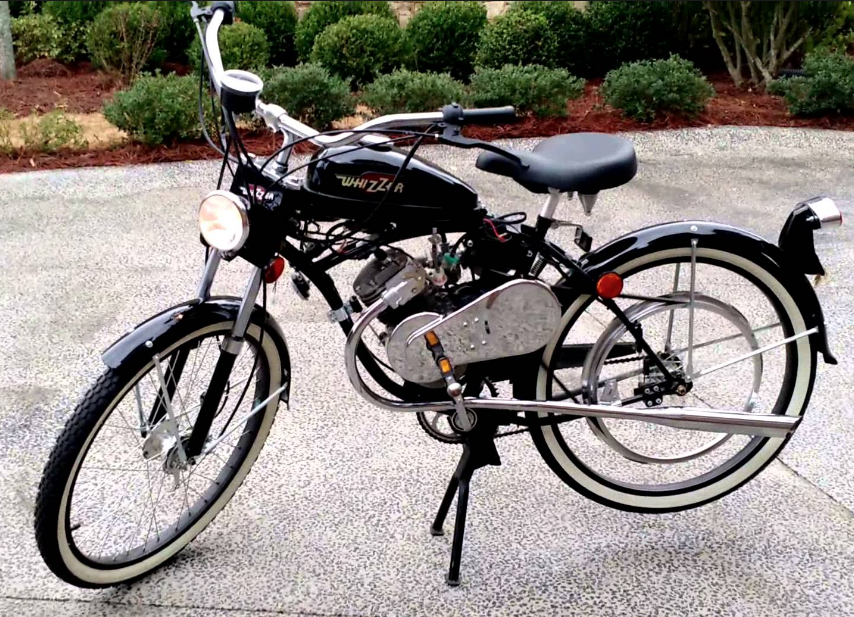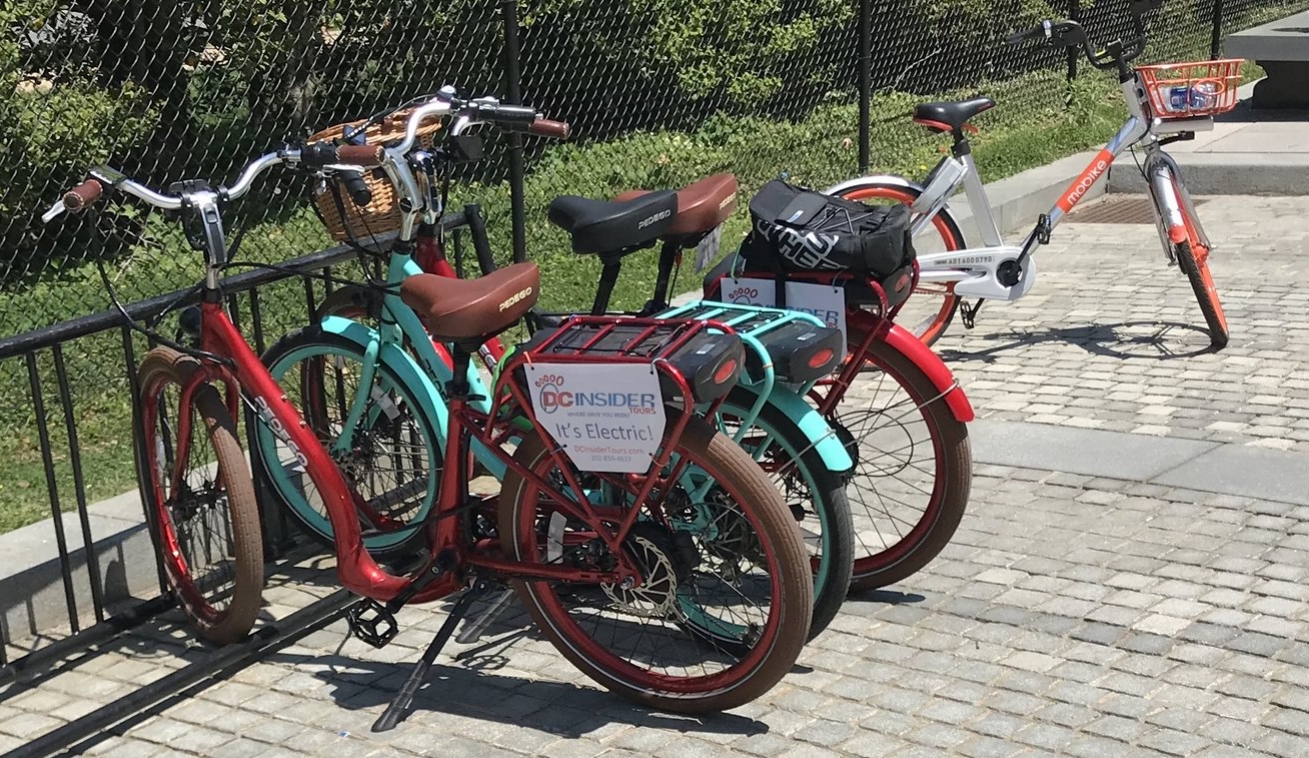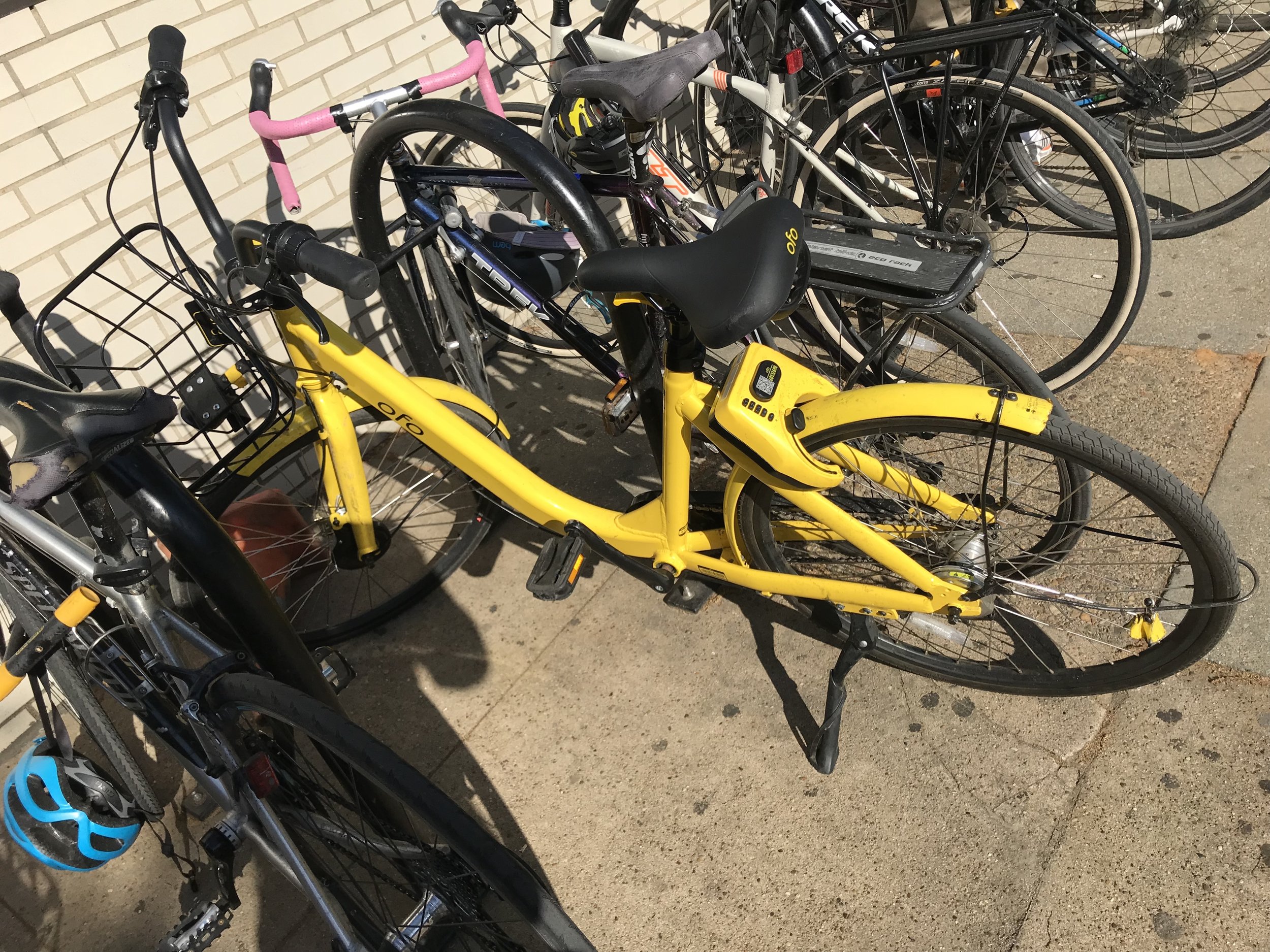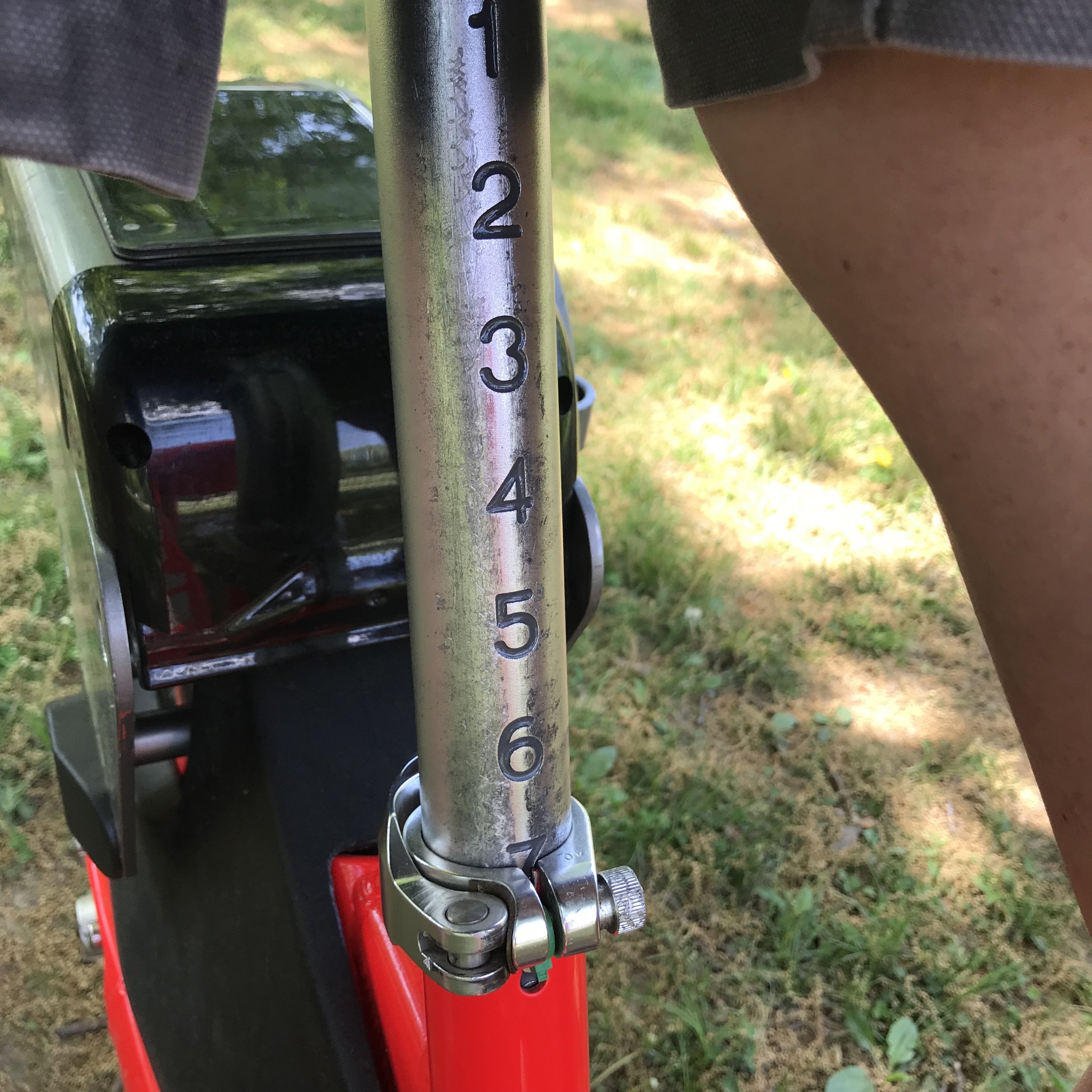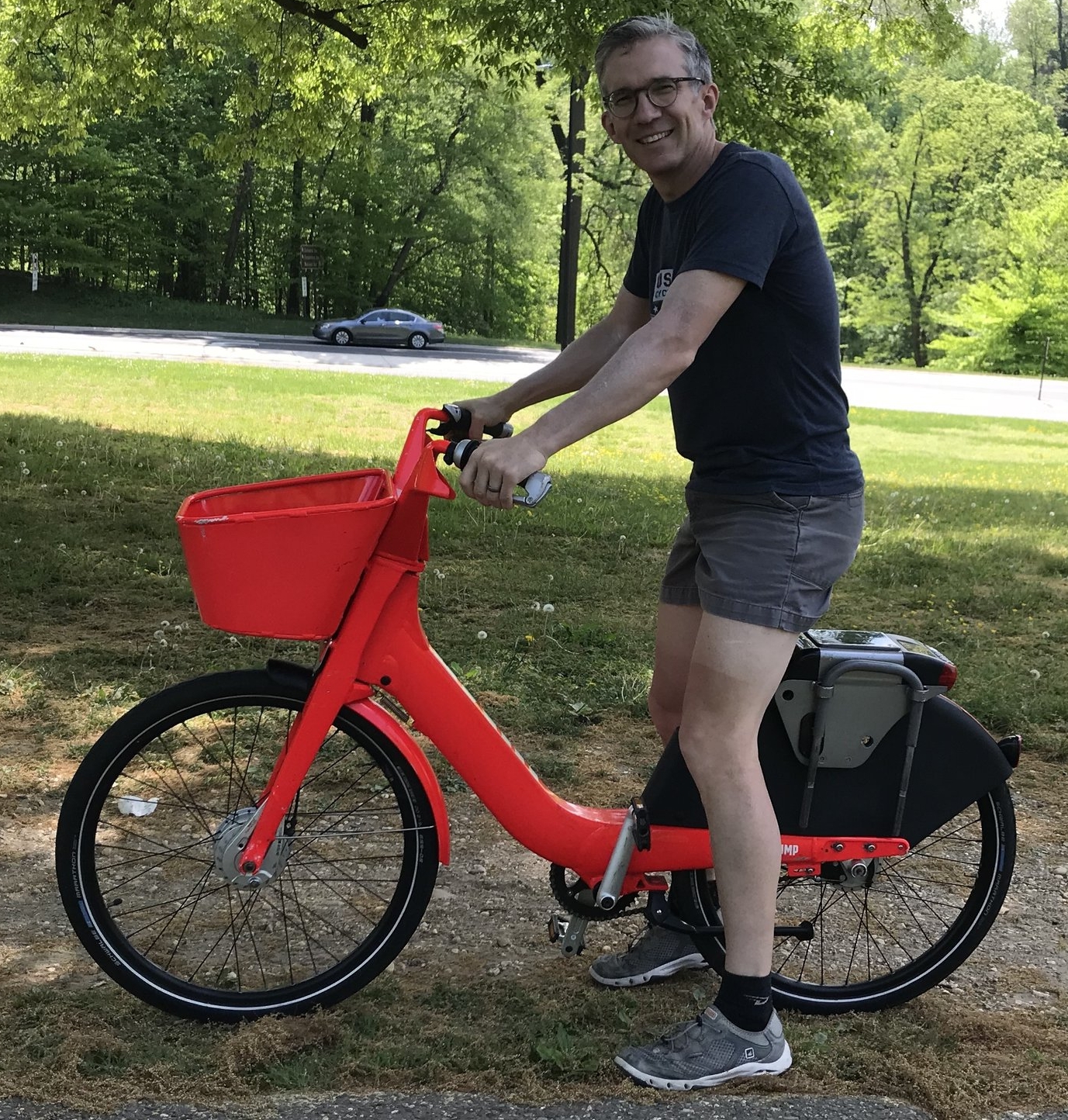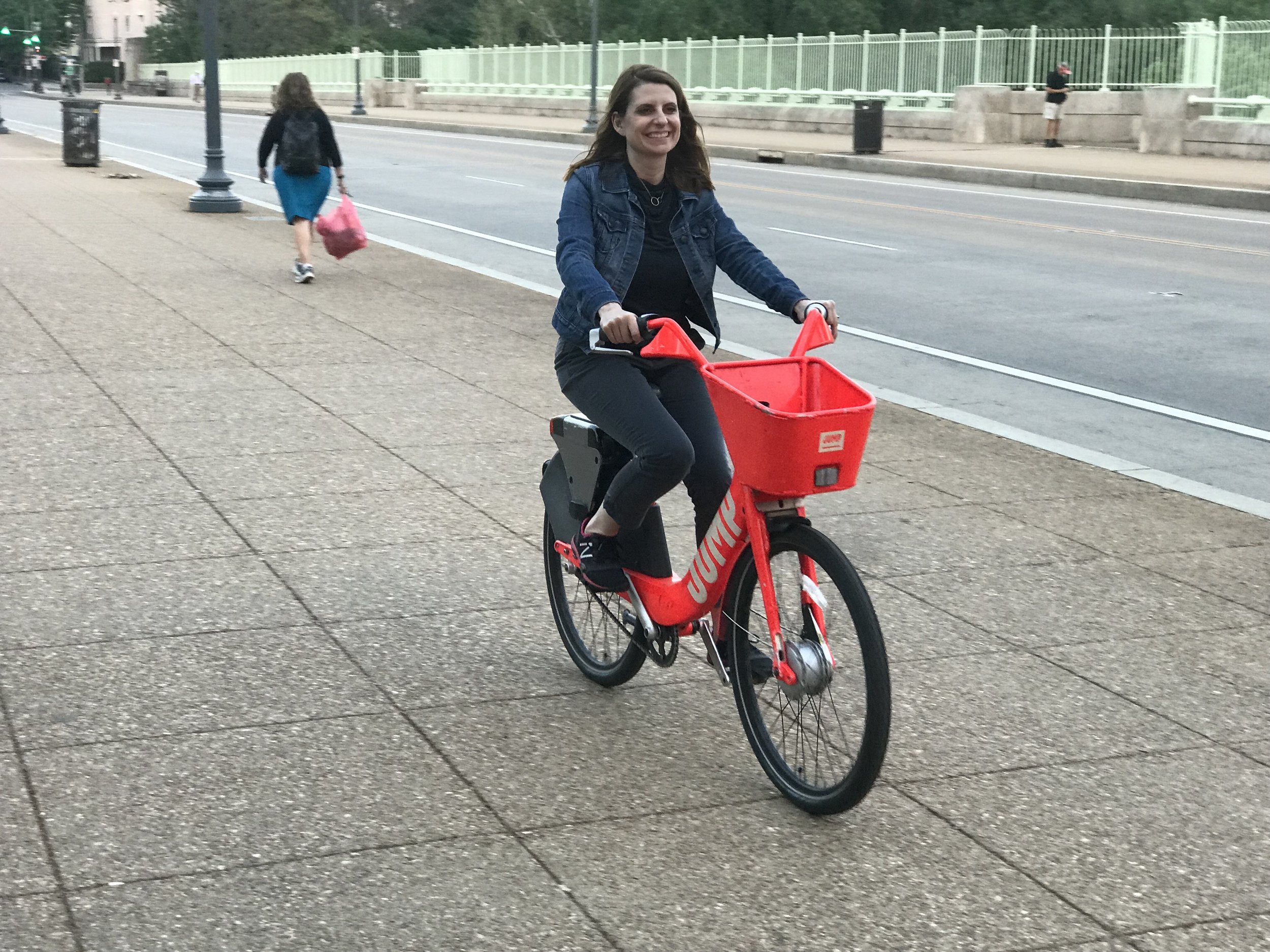I'd never been on an e-bike before I went to Washington, D.C., last week. I've seen a lot of them. I thought they looked goofy: the giant downtube, or the giant hub on the wheel providing power:
electricbike.com
And I'm consistently annoyed by the gas-powered "Whizzer" style bikes that people ride on the bike paths in Wichita, blowing blue smoke and making noise.
ebay.com
So I was a skeptic. E-bikes seemed lazy and ugly. They seemed to fill a niche that didn't really exist: why not just buy a moped or scooter? But just before I left for D.C. I saw reports that Uber, the beleaguered ride share company, had bought Jump, a dockless e-bike share company that is only in a few markets (D.C., San Jose, and San Francisco). Uber riders have been able to book JUMP bikes via the Uber app since January 2018. For the time being, JUMP’s app will continue to exist, but I suspect they'll eventually be completely integrated into the Uber app. When I got off the train to my hotel, sure enough, I saw one. The bikes are aesthetically pleasing, with their little aerodynamic basket in front:
The Jump is on the other side of the fat (phat?) downtube.
Dockless bike shares are controversial among a certain set of people, who complain about the possiblity of "abandoned" bikes littering cities. This has naturally and appropriately drawn sarcastic scorn from critics of car culture, who point out that cars themselves are mostly "dockless":
Uber's motivation for buying up Jump was apparently that a big fraction of Uber's trips are very short (maybe under 3 miles). And since the demographic that would tend to use the bikes is at smartphone saturation (for better or for worse), it makes sense for Uber to try to divert those rides to e-bikes, where the company wouldn't have to divert 80% of revenue toward drivers (because the "driver" of the e-bike is you, and you're paying for it. Get it?).
So, needing to entertain myself for a couple hours, I tried one. Step one was to download the app, just like Zagster and a million other such companies.
Obviously, I tried a few other sharing services while I was there, too. All those apps on my phone? That's not even all of them I could have put on there. I know I missed D.C. Insider, Ofo, Mobike, and Capital Bikeshare (I used Capital Bikeshare, but you don't need the app to do it). There may have been others. D.C. is to bike/scooter share what the Idaho panhandle was to anti-government militias in the '90s.
Ofo trying to capture the Blind Melon revivalist market.
And that's not even counting the scooters.
Once the app was downloaded, I got an account number emailed to me, and I chose a PIN. The same email warned me to "start slowly to get familiar with its boost."
I scoffed. Please. I've ridden a million bikes. I've ridden almost as many motorcycles. I know power.
Next was checking out the bike. The app tells you that you can either walk up to a bike and check it out, or reserve one through the app. No need in my case, since I was standing by the bike. But in case I couldn't find a bike right away, I could have held one for up to 20 minutes ahead of time, with the knowledge that the clock would start ticking once the reservation was made (if I didn't make it to the bike in time, the reservation would cancel automatically).
Next, I needed to actually rent the bike. I was instructed to enter my account number and PIN using the keypad on the back of the bike, then to remove the U-lock and slip it into the two holster loops on the left:
This is actually from the end of the ride, since I was too big a bonehead to remember to photo it up front. FYI: The solar panel only powers the electronics.
Then I was to adjust the seat height to one that works best for you. This was a little complicated because, as a #bikesharerenegade who often lets his kids ride bike shares with him, I needed to adjust the seat several times for my kids and me. I was not reassured that Jump bikes use the same janky, slippy clamp and post as virtually every other bike share:
Then: "Test your brakes. And get ready for the smiles." Oh, I was ready:
That goofy smile is system-delivered. Tan lines are an upgrade.
The jump bikes have a threaded bottom bracket. Yay!
A spring keeps the front wheel from flopping around.
We headed for the proving ground, Rock Creek Park:
This is from the bottom of the park, looking up north and east.
That gentle upslope you see is no joke. It's actually a pretty legit climb, a little over a quarter mile at a near-seven percent grade. It would easily qualify as the biggest hill in Wichita were you to transport it 1500 miles west:
We coasted down the hill without really even pedaling, then turned back uphill. And wow. When you step on the pedals, the bike really jumps. I immediately regretted my initial scoffiness. It was legit, even a little unnerving the first time. When my daughter did it, she couldn't help but laugh with delight at the acceleration. That same eleven year-old daughter of average athleticism absolutely hammered this hill on the Jump Bike. I should have timed her, because I legitimately think she would have been in Queen of the Mountain range, thanks to the e-bike boost. My friendly neighborhood wattage calculator, assuming 75 watts from my daughter, gives me this (the Jump Bikes generate 250 watts, according to WikiPedia):
The bikes have three speeds, courtesy of Sturmey-Archer:
But honestly, you don't need the bottom two unless you want to climb Quintana-style. Even a modestly fit rider can crush hills on this thing.
The bike was cheap: $2 to rent, which buys 30 minutes, or 11 miles at 250 watts:
That's enough to get me halfway across Wichita. If you go over 30 minutes, you're $0.07/minute for additional use. If you run out of pedal assist power, you can note that when you end the rental and Jump will "take care of it from there," which I assume means swap out the battery. If you leave the service area of the bikes, you're warned that you might get charged a fee for retrieval. This is dirt cheap; about half what it costs over time to ride a scooter share (yep, they have those in DC too). This leads me to my final point on e-bikes, and potentially e-bike shares: they're the future. They're the future because they're so democratic. They're cheap, and almost anyone with even rudimentary bike skills and basic fitness can ride one. My mom is in her seventies and has not been on a bike since her teens, I suspect. But she could easily pedal an e-bike 20 miles in an hour or so. And if she couldn't, it probably wouldn't be because of leg, lung, or heart fatigue. It would be a matter of regaining some basic bike handling skills and butt toughness.
A full charge gets you about 30 miles of range, just slightly below what my Chevy Volt gets on a charge. I drive said Chevy Volt because I can travel the vast majority of miles I travel under electric power. The reason I drive a Volt instead of, say, a Nissan Leaf is because I like the insurance policy of a gas engine behind the electric battery. If I go beyond the 40-ish miles the battery gives me I can get another 240 miles from the gas engine. The beauty of e-bikes is that I’m that insurance policy. If the battery quits, there’s a couple hundred watts of human power on the pedals to get me home.
The advantage of the "e" in e-bikes is mostly sweat. Or lack thereof. Jump bikes make me think a future garage may have not two cars, but a car and an e-bike. The e-bike will be adjustable so that the bike can be used by multiple members of the family:
The lovely and talented Tracy Williams, MD.
The bike could be shared like the car was. But the cost of owning the bike would be essentially zero compared to the cost of a fancy gas-powered wheelchair. And you can criticize the decreased work of riding an e-bike versus an unmotorized bike, but riding an e-bike is still a helluva lot more exercise than piloting a gas-powered wheelchair. And it gets you out to interact with humanity in a non-fist-shaking, non-furious way. Ever see somebody on an e-bike with road rage? Me neither. It goes fast enough, relatively sweat-free, to get you places in a reasonable amount of time, but not so fast that it turns you into a raving lunatic at every 20-second delay for a crosswalk or light.
At the end of our test session, we locked the bike back to a rack:
Biggest criticism? That U-lock is tough to get in place if the space is tight. You have to wrassle a really heavy bike around to get the tines on the lock to line up with the holes through the frame and wheel. It's tough. A much better design would be like Zagster's here in Wichita:
I don't think security would be an issue, since 1) the bikes are tanks, and 2) they're tracked with GPS. The Jump bike automatically ends your ride when the lock is put in place, though, which is nice. To incentivize people to put the bikes back where they'll be easy use (and presumably easy for the Jump folks to pick up and charge), they offer $1 credit for returning any bike parked outside of a virtual fenced-in "hub" back to a hub. Try as I might, I cannot find a map for these.
Updated 5/14/18 with a picture of the Sturmey-Archer shifter.

